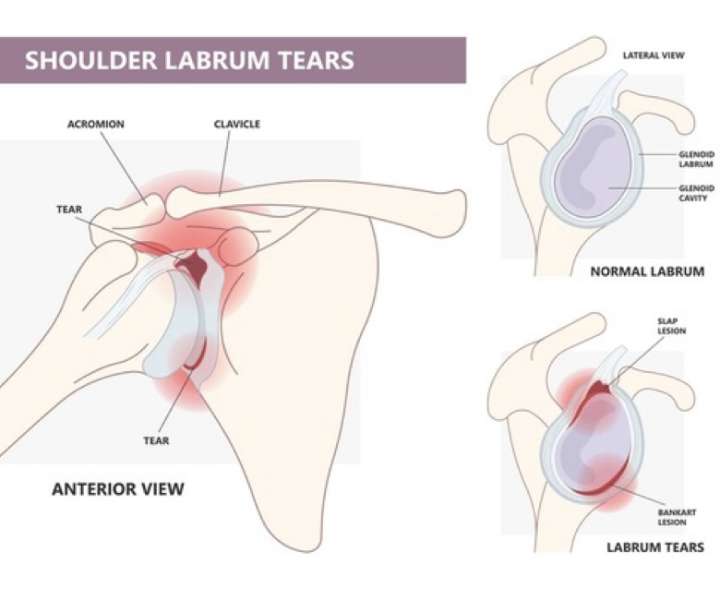Arthroscopic Bankart repair
What is a Bankart Lesion?
A Bankart lesion is an injury where the labrum (fibrous cartilage ring) in the shoulder joint becomes detached from its attachment to the bone-glenoid (socket). The labrum normally functions to deepen the cavity of the glenohumeral joint which is one of the most mobile joints in the human body. This often occurs after a dislocation or subluxation (partial dislocation) of the shoulder, causing instability. Sometimes it may be associated with a small piece of bone that gets broken off from the socket in which case it is termed as ‘bony Bankarts’. In some patients, repeated episodes of dislocation can lead to the development of an impaction (or impression) fracture on the humerus head. This is called a Hill-Sach lesion. The injury is common in athletes who participate in contact sports such as kabaddi. The patients are apprehensive about placing their shoulder in the “throwing” position because this tends to place the torn labrum at a stretch and can sometimes even cause a recurrent dislocation. Routinely patients with Bankart lesions require a preoperative CT scan along with an MRI to help quantify any bone loss that can alter the surgical plan.

Symptoms of a Bankart Lesion
- Shoulder pain and instability
- Repeated dislocations or subluxations
- Difficulty with overhead motions
- A feeling that the shoulder may “pop out”
Arthroscopic Bankart Repair
For patients with recurrent instability due to a Bankart lesion, arthroscopic surgery is recommended to reattach and tighten the labrum.
This minimally invasive technique uses tiny incisions and an arthroscope (camera) to access and repair the damaged part of the shoulder joint.
What patient can expect before surgery?
- Detailed clinical examination to recognize the shoulder instability and presence of additional pathologies if any. Functional scoring of the patient is done which is repeated after surgery at follow-up visits.
- X-ray of the shoulder to evaluate the condition of the bone and the joint MRI of the shoulder to confirm the diagnosis of Bankart tear and also to identify additional injuries to the shoulder
- CT scan of the shoulder to help calculate the extent of bone loss of the glenoid which can influence the surgical plan
- Preoperative physiotherapy assessment to assess the muscle strength and range of motion and to start “Pre-hab” exercises
- Anesthesia checkup to recognize potential medical issues that can affect the peri-operative course
- Additional investigations like blood tests, chest Xray, electrocardiogram (ECG), or any other test as determined by the anesthetist/physician as being essential for surgery
The Procedure
The surgery is usually done under general anesthesia augmented by a regional anesthetic block.
- Small incisions are made around the shoulder area
- The arthroscope is inserted to visualize the labrum tear and if any additional pathology exists
- The detached labrum is released and the bony surface is prepared
- Suture anchors are used to reattach and tighten the labrum securely. This is termed capsulolabral repair
- The incisions are closed with sterile-strips or sutures
Benefits of Arthroscopic Repair
- Smaller incisions, less pain and stiffness than open surgery
- Lower infection risk
- Quicker recovery and return to activities
- Restores shoulder stability and function
Recovery and Rehabilitation
After surgery, the shoulder is immobilized in a sling to minimise postoperative pain. During the initial three weeks gentle range of motion exercises are advised with restriction of external rotation that might strain the repaired labrum. Gradually and in a phased manner, additional movements are added to the rehab protocol and usually at 6 weeks strengthening exercises are started. Physical therapy focusing on range of motion and strengthening is critical over 3-6 months. Most can return to activities in 4-6 months with specialised rehab program.
With arthroscopic Bankart repair, patients can regain shoulder strength and mobility, prevent future dislocations, and resume an active lifestyle.


